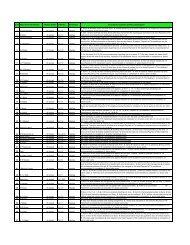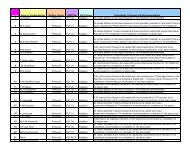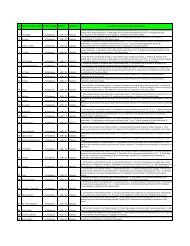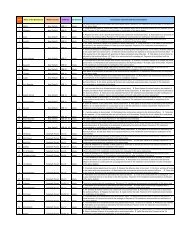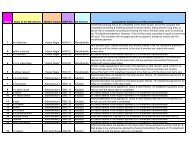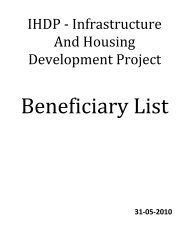Project Appraisal Document - IHDP
Project Appraisal Document - IHDP
Project Appraisal Document - IHDP
- No tags were found...
You also want an ePaper? Increase the reach of your titles
YUMPU automatically turns print PDFs into web optimized ePapers that Google loves.
28. Communication Campaign: An information dissemination campaign outsourced to a firmwould explain the PHP, the beneficiary eligibility criteria, rights of IDPs, projects targeted at non-IDPs and best practice with regards to water conservation to ensure transparency andaccountability.29. Continuous Social Impact Assessment (CSIA): This would independently monitorcommunity perceptions, grievances and feedback on project implementation on an ongoing basis.It would use this to evaluate the social dimensions of PHP and flag any emerging reputationalrisk.30. Mid Term Environmental Audit outsourced to a firm would examine the project’scompliance with environmental guidelines and safeguards during implementation.31. Technical Audit: This would independently monitor whether construction complies withagreed technical standards. It would audit a 5% sample of beneficiaries in all refugee camps andits recommendations would feed into subsequent rounds of project supervision.32. Housing Assessment Survey: The IDP land profile has changed significantly in recentmonths due to the rapid regularization of property title. A Housing Assessment Survey wouldrevalidate household profile, the type of house and land ownership in each refugee camp, buildingupon the results of the UNHCR supervised survey, the EIA and the SA. It would determine theexact construction needs in the case of a partly-completed house. The survey would thereforehelp technical officers to certify payment to eligible households, supervise construction andfacilitate overall implementation roll out.33. Skills Training for Construction Labor: PHP would support the training of 1,000 masonsand carpenters to bridge the shortage of skilled construction labor in Puttalam. The proposedtraining courses would run for four months in each training site, and would consist of classroomtraining and supervised on-the-job training. The contractor and PPU would enter into amemorandum of understanding that these laborers be made available to the refugee camps forpart of their apprenticeship.Component Four: <strong>Project</strong> Management (US$ 1.38 million).34. The Ministry of Resettlement would manage and monitor the PHP at the center. Thedistrict administration would support implementation at the district and divisions. The PPU wouldhandle implementation on a day to day basis. An Operational Manual that sets forth guidelines,procedures and responsibilities was submitted to IDA during <strong>Appraisal</strong>. The PHP would allocatefunds to cover staff expenses, incremental operating costs that include travel, transport, fuel, food,lodging but not salaries, and the procurement of goods that includes two vehicles and motorcycles. This component would meet the cost of the grievance redressal mechanism.Lessons Learnt and Reflected in the <strong>Project</strong> Design35. The Government had commissioned five studies as part of project preparation i.e. aUNHCR supervised census of 141 refugee camps in Puttalam, a Social Assessment, anEnvironmental Assessment, a Water Concept Feasibility Study and Preliminary EngineeringReports for the water schemes in Phase 1 camps. The Social Assessment and the EnvironmentalAssessment were carried out in 111 of the 141 refugee camps accounting for 80% of the IDPpopulation. The 30 remaining camps would be covered by January 31, 2007.11



